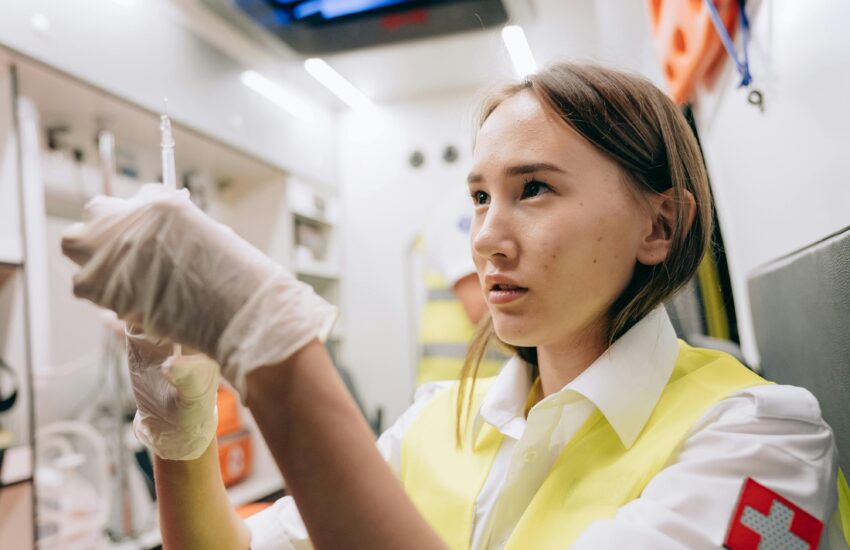Emergency Care for Hamsters
Hamsters are beloved pets, known for their adorable antics and small size. However, like any pet, they can face health issues that require urgent care. Understanding what constitutes a health emergency for hamsters and knowing how to respond can be crucial for any hamster owner. This guide will walk you through the essential steps for emergency care for hamsters, including recognizing symptoms, providing first aid, and when to seek veterinary help.
Recognizing Health Emergencies in Hamsters
One of the first steps in providing emergency care for hamsters is understanding the signs that indicate a health crisis. Common indicators include lethargy, difficulty breathing, excessive scratching, or any sudden changes in behavior or appetite. For example, if your hamster is usually active and suddenly becomes very still and unresponsive, it’s a red flag that should prompt immediate action. In these situations, observing their behavior closely can help you determine if an emergency vet visit is needed.
Signs of Distress
Hamsters can show distress in various ways. Some clear signs of a potential emergency include:
- Hunched posture: If your hamster is sitting hunched up with its fur ruffled, it may be experiencing pain or discomfort.
- Abnormal breathing: Rapid or labored breathing could indicate respiratory distress.
- Loss of fur: Patchy fur loss can signify skin problems or stress.
- Bleeding: Any bleeding from the mouth, nose, or skin should be treated immediately.
If you notice these signs, it’s essential to assess the situation promptly. Keep calm as stress can affect both you and your pet.

Common Health Issues in Hamsters
Hamsters are susceptible to several health issues that may require emergency treatment. These can include:
- Wet tail: This is a serious intestinal condition that can be fatal. Symptoms include diarrhea and a wet appearance around the tail area.
- Respiratory infections: Signs include wheezing, sneezing, or discharge from the eyes or nose.
- Abscesses: These can form due to bites or infections and may require drainage by a vet.
Understanding these conditions will help you react quickly and appropriately to your hamster’s needs.
Initial First Aid Steps
When faced with a hamster emergency, quick action can make a significant difference in outcomes. Knowing how to provide basic first aid can stabilize your pet until you can get to a veterinarian. Always keep a first aid kit handy, stocked with essential items like sterile gauze, saline solution, and a small animal safe antibiotic cream.
Performing First Aid for Wounds
If your hamster has a wound, the first step is to clean it gently. Use saline solution to flush the area and remove any debris. Avoid using hydrogen peroxide, as it can damage the tissue. After cleaning, apply a small amount of antibiotic cream and cover the wound with sterile gauze, securing it with medical tape. Keep an eye on the wound for signs of infection, such as redness or swelling.

Handling Respiratory Issues
If your hamster is having trouble breathing, it’s important to act swiftly. Place your hamster in a quiet, draft-free area to minimize stress. A humid environment can be beneficial; consider using a steam from a bathroom or a humidifier. Avoid using any medications unless prescribed by a veterinarian. If breathing does not improve within a few minutes, seek veterinary care immediately.
Transporting to a Veterinarian
In some cases, your hamster may need to be transported to an emergency veterinarian. During transport, ensure your hamster is in a secure, well-ventilated carrier. Place a soft cloth or some bedding in the carrier to provide comfort and absorb any potential mess. Offer minimal food and water during transport, as stress can cause them to refute eating or drinking.
Choosing the Right Veterinary Clinic
Identifying a veterinary clinic that specializes in small animals is vital. Look for facilities that have experience with hamsters and other rodents. Whenever possible, ask for recommendations from fellow pet owners or check online reviews to find a trustworthy clinic that is available for emergencies. It’s beneficial to have a vet’s number saved in your phone for quick access in case of an emergency.

Post-Emergency Care
After your hamster has received emergency care, observing its behavior and recovery is essential. Follow your veterinarian’s instructions regarding medication, dietary changes, and any follow-up appointments. Providing a quiet and comfortable environment can significantly aid in recovery. Additionally, ensure that your hamster is hydrated and eating appropriately, as these are key indicators of its health status.
Key Takeaways
- Recognize signs of distress such as abnormal breathing and unusual posture.
- Act quickly: perform basic first aid, especially for wounds.
- Have a veterinary contact readily available for emergencies.
- After treatment, monitor your pet closely for signs of recovery.
FAQ
1. What should I do if my hamster is bleeding?
If your hamster is bleeding, clean the wound with saline solution and apply an antiseptic cream. If the bleeding is severe or does not stop, take your hamster to the veterinarian immediately.
2. How can I tell if my hamster has wet tail?
Wet tail is often characterized by watery diarrhea and a wet appearance near the tail. Other signs include lethargy and a lack of appetite. If you suspect wet tail, seek veterinary assistance immediately, as it can be life-threatening.
3. What common signs indicate that my hamster is having trouble breathing?
Signs include wheezing, open-mouth breathing, or unusual posture with the head positioned high. If you observe these signs, providing immediate care in a calm environment is crucial.
4. How often should I monitor my hamster’s health?
Regularly observe your hamster during its active periods. Daily checks for any behavioral changes or physical symptoms are advisable, as early detection of issues can prevent emergencies.
5. Where can I find an emergency vet for my hamster?
Check local veterinary listings for clinics specializing in small animals or emergency services. Online reviews and community recommendations can help you find an experienced vet nearby.
